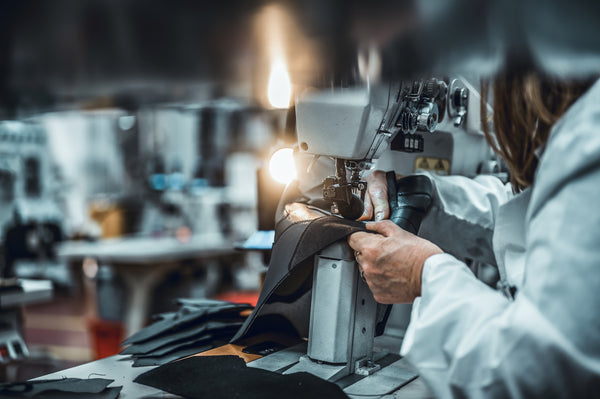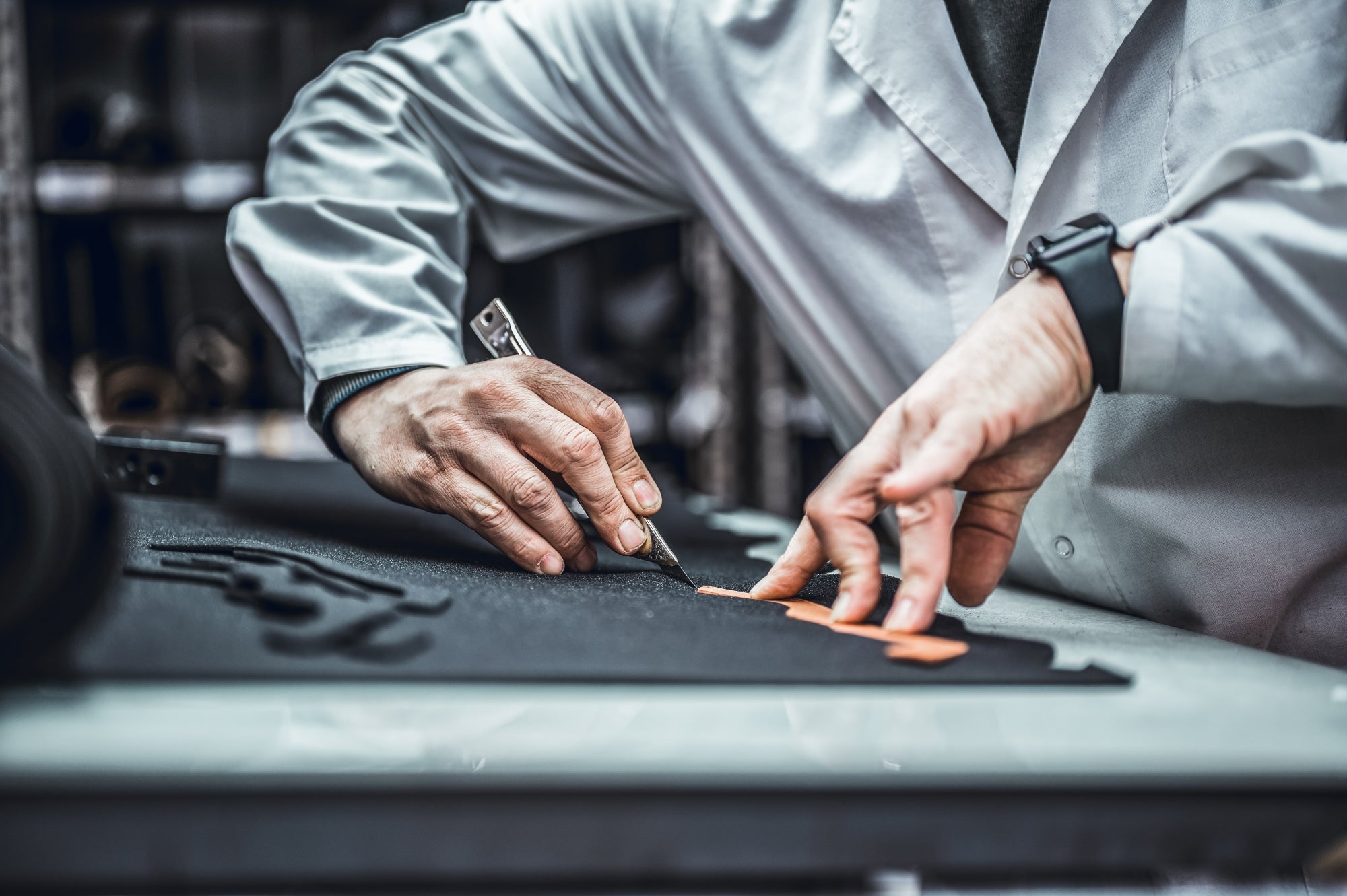Our Philosophy
No compromises. Quality, comfort and functionality make us No. 1
We aren't satisfied with second best. For that reason, we offer our customers the highest quality from raw materials to the finished footwear. The expectations we place on ourselves and our service help us create the high quality of our boots.
The diligence of our talented employees and their never-wavering standards to construct the perfect footwear accompanies every phase of product development. Our service regarding every aspect of our boots takes into account this standard.
OPTIMAL COMFORT AND SAFETY IN OUTDOOR FOOTWEAR
Our boots are not only a guarantee of optimal comfort, but they are also a vital piece of safety equipment. Our guiding principle of uncompromising quality stems from our ambition to produce the best in product excellence. Absolute precision in our development and construction are vital for secure footing and the best possible functionality during every use.
We see quality as a decisive and crucial part of our philosophy that safeguards the trust our customers have in our performance. That's precisely why we make no compromises!

OUR Production Methods
LOWA - tradition since 1923. We provide an insight into the production in Jetzendorf.
The essential material in the manufacturing of footwear, leather is made stable and long-lasting through a process known as tanning.
Leather is very durable and abrasion-resistant while also being flexible and slightly elastic. Plus, depending on its treatment, it can absorb varying amounts of water vapour. It can even be made waterproof during the tanning process through a special impregnation, the so-called hydrophobic treatment.
The tanning agents are bonded firmly to the fibres of our high-quality leathers. Our tanneries produce their leathers as environmentally responsibly as possible, and each runs its own wastewater treatment plants.

Types of Leather
LOWA uses only specially selected cow hides from Europe. These are of course free of pollutants.
LOWA uses only specially selected cowhides from Europe. These are always free of pollutants.
Based on their desired use, leathers are differentiated in many ways. Cowhides in an unfinished state are approximately six to eight millimetres thick and must, therefore, be split. During the tanning process, it's decided where the splitting will occur - whether it will be a thicker full-grain leather and a thinner split-leather or something different.
Smooth leather - Upper layers of the hide, not as scratch-resistant. Nubuck leather - Upper layers of the hide, lightly brushed. Moderately scratch-resistant and stable. Ideal for trekking boots. Suede leather or split leather - Middle layers of the hide with a visible grain. Very durable but with limited stretch and less resistance to tears. 'Roughout' (hunting) leather - Very durable material with a stable backside, optimal for Alpine boots.
Learn more about the leathers we use in our upper lining & material blog.

CUTTING LEATHER FOR FOOTWEAR
Just like baking biscuits, a hydraulic press punches a pattern-cutter through the leather.
The leather for our boots must be cut precisely, not just in shape but the position on the hide. The exact location on the grain where the pattern is cut can impact structure and flexibility, so experience and know-how is a must.
Here at LOWA, we use a special pattern-cutter for each part of the boot, depending on the shoe and size being produced.

Sewing
After the leather pieces are punched out, they must be precisely sewn together with robust sewing machines.
The sewing on LOWA boots is always done by an expert using an industrial sewing machine. This combination of human know-how and mechanical power ensures the stitching on LOWA boots is as secure as possible.
During this process, any particular inner linings are also sewn, such as the waterproof GORE-TEX® linings used on many models.

GLUEING AND FIXING
At LOWA, an exclusive spray-on glueing process ensures that the material's pores for transporting moisture out of the footwear remain open.
Glueing is a vital part of the footwear production process, particularly when it comes to the outsole. A robust and durable connection is required to ensure the durability of any footwear. However, with outdoor boots, the shoe also needs to remain breathable, allowing air and moisture to flow out while keeping its waterproof properties.
These high demands are why we use an exclusive spray-on glueing process when manufacturing our boots. This choice allows us to create long-lasting, durable footwear that is also breathable, for those long-distance treks.
This level of care is also taken when fixing other materials onto our boots, such as metal eyelets and hooks for our lacing systems. Here, we use specialised riveting machines to ensure they are just as durable.

Lasting
A last is what we call the foot-shaped form made of wood or plastic on which a shoe is made.
The shoe is shaped over the last during the manufacturing process. Our unique and detailed lasts are what allow us to create the most comfortable footwear on the market. You can learn more about this section in our blog post all about shaped lasts.

Shaping the uppers
Shaping the uppers (the top part of the shoe) is the complicated process of forming the shape of the leather and then attaching it to the last.
These days, detailed, computerised machinery guides the process of drawing the leather upper over the last until it is firmly and correctly positioned.
Once fitted, the lasting machine's pincers then pull the bottom edge of the material underneath the form. The upper is fastened using cement or tacks onto an insole that's been placed on the last. The outsole will later be attached to this same insole.

Rubber rand
A typical quality hallmark of LOWA is the rubber protective edging, or "rand", that is mounted separately.
The rand is a rubber strip that runs around the boot, often over the divide between the outsole and the upper material. This strip plays a vital role in the durability of outdoor footwear, protecting the edges of the leather from moisture and damage. LOWA rands are mounted separately with the precision of an expert to ensure they are perfectly fitted to the footwear.

Soles
LOWA almost exclusively uses rubber soles which are usually equipped with a cushioning midsole of polyurethane (PU) foam.
As with the shaped and cemented upper, the sole of a boot must be extensively pre-treated before use. Once ready, it is cemented onto the footwear with a pneumatic press. Immediately after attachment, the bonds are cured in a cooling chamber to ensure the best connection and durability.
For more information on the products we offer, check out our blog on sole technology.

Removal of the last
The last, which has given shape to the product during production, is then pulled out of the finished footwear.
This task requires very precise handling. While it used to be done by hand, nowadays it is done with the help of dedicated machinery.

Finishing
During the final quality control, all footwear gets a finishing touch.
Once the boot is complete, laces are threaded, footbeds inserted and product tags are attached before the footwear is packed and ready to go.

Packing and Shipping
Footwear is stored in the LOWA warehouse and sent to customers from there.
Hopefully, this blog has provided an insight into how we produce the best, most durable walking boots on the market! We have a full range of outdoor footwear available, from lightweight hiking boots to heavy-duty alpine footwear designed for the toughest of conditions. If you have any questions about our products, feel free to get in contact with the team at here at LOWA UK who are more than happy to help.









